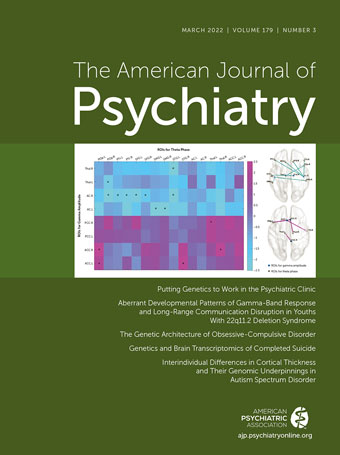Insights Into the Genomic Underpinnings of Psychopathology
Large Scale Studies on Rare Genomic Disorders Inform an Understanding of Psychiatric Neurodevelopmental Disorders
Characterizing Gamma-Band Brain Oscillations in Individuals with 22q11.2 Deletion Syndrome at Risk to Develop Psychosis
Insights Into the Genetic Architecture Underlying the Heritability of Obsessive-Compulsive Disorder
Dorsolateral Prefrontal Cortical Gene Expression Alterations Associated with Violent Suicides
Using Cortical Thickness and Gene Expression Data to Parse the Heterogeneity of Autism Spectrum Disorder
Conclusions
REFERENCES
Information & Authors
Information
Published In
History
Keywords
Authors
Funding Information
Metrics & Citations
Metrics
Citations
Export Citations
If you have the appropriate software installed, you can download article citation data to the citation manager of your choice. Simply select your manager software from the list below and click Download.
For more information or tips please see 'Downloading to a citation manager' in the Help menu.
View Options
View options
PDF/EPUB
View PDF/EPUBLogin options
Already a subscriber? Access your subscription through your login credentials or your institution for full access to this article.
Personal login Institutional Login Open Athens loginNot a subscriber?
PsychiatryOnline subscription options offer access to the DSM-5-TR® library, books, journals, CME, and patient resources. This all-in-one virtual library provides psychiatrists and mental health professionals with key resources for diagnosis, treatment, research, and professional development.
Need more help? PsychiatryOnline Customer Service may be reached by emailing [email protected] or by calling 800-368-5777 (in the U.S.) or 703-907-7322 (outside the U.S.).

